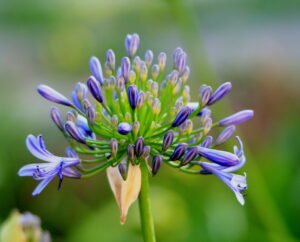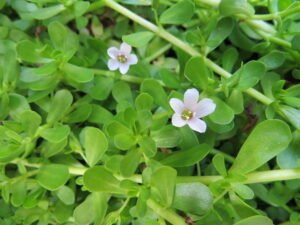How To Plant And Care For Dianthus Flowers

Are you looking to add a touch of beauty and fragrance to your garden? Look no further than the dianthus flower. Dianthus, also known as Pinks, Sweet Williams and Carnations, are delightful, low-maintenance plants that can bring color and charm to any garden or landscape. In this guide, we will walk you through the steps of planting and caring for dianthus flowers, so you can enjoy their beauty year after year.

Some Interesting Facts About Dianthus
Dianthus is also known as Pinks, Sweet Williams and Carnations. The name Dianthus have Greek origin, and it is in fact made up of two Greek words Dios and Anthos. In Greek Dios means God/Zeus and Anthos means flower so word Dianthus means flower of the gods. It was named by the Greek botanist Theophrastus who was mesmerized by the “divine” beauty of Dianthus flowers.
Dianthus is a genus of flowering plants and there are about 340 flowering species in its family Caryophyllaceae. Dianthus is native plant of Europe and Asia.
Dianthus are know for their sweet and spicy fragrance. When used as cut flowers they brighten up the space with their beautiful flowers and refreshing fragrance. Cut flowers can last up to 2 weeks in plain and simple water, hence Dianthus are in fact one of the most durable cut flowers.
Dianthus are known to attract bees and butterflies in your garden, this apart from enhancing beauty of garden is also good for pollination of other plants in your garden.
Dianthus is know for having healing and medicinal properties. Dianthus is used as a herb for curing inflammation and digestive issues.
Some Commonly Asked Questions About Dianthus
Where to grow Dianthus, In Sun or Shade?
Dianthus grows best in direct sunlight. Dianthus in fact needs 6-8 hours of sunlight daily to grow healthy and to bloom properly. Though it prefers afternoon shade in summers.
Is Dianthus Perennial Or Annual Plant?
Dianthus is a perennial plant but in areas that have harsh summers it is grown as cool season annual flowering plant. Dianthus is known to self seed and will come back each year in favorable conditions. Dianthus barbatus is popularly known as a biennial plant (a plant with 2 years life span).
Is dianthus poisonous?
Dianthus is known to have flowers that are not toxic and are in fact edible. But its leaves and stems are toxic to children and pets. Accidental ingestion of leaves and stems can cause vomiting and upset stomach. Additionally Dianthus sap is known to cause dermatitis.
When does Dianthus bloom?
Dianthus blooms in spring, early summer and falls. If the summer is not harsh in your area it is known to bloom from spring to fall.
How To Plant Dianthus Plant?
Choosing the Right Location
Before you start planting your dianthus flowers, it’s important to choose the right location. Dianthus plants like full sun light and well-drained soil. Choose a spot in your garden that gets six to eight hours of direct sunlight per day. If you live in a hot climate, some afternoon shade can be beneficial to protect the flowers from scorching.
Preparing the Soil
Once you have selected the perfect spot, it’s time to prepare the soil for Dianthus plantation. Dianthus plants prefer slightly alkaline soil with a pH between 6.0 and 7.0. If your garden soil is too acidic, you can add garden lime or wood ash to raise the pH. On the other hand, if your garden soil is too alkaline, you can add sulfur to lower the soil pH. It’s also a good idea to incorporate organic matter, such as compost or well-rotted manure, to improve the soil’s fertility and drainage.
Planting Your Dianthus
Now that your soil is ready, it’s time to plant your dianthus flowers. Dig a hole that is slightly larger in width and equal to the height of the the root ball of your Dianthus plant. Place the plant in the hole, making sure that the top of the root ball is level with the soil surface. Backfill the hole with soil, tap and pat gently to firm it around the plant root ball. Water the newly planted dianthus thoroughly to settle the soil and remove any air pockets.
How To Care For Dianthus Flower?
Watering and Mulching
Proper watering is crucial for the health and vitality of your dianthus flowers. While dianthus plants are relatively drought-tolerant, they still require regular watering, especially during hot and dry periods. Water your dianthus deeply once a week, ensuring that the soil is moist but not waterlogged.
Mulching around your dianthus plants can help conserve moisture, suppress weeds, and regulate soil temperature. Apply a layer of organic mulch, such as dry leaves, wood chips or straw, around the base of the plants. Taking care while mulching to not to cover the stems. This will also add a decorative touch to your garden.
Deadheading and Pruning
To encourage continuous blooming and maintain the overall health of your dianthus plants, it’s important to deadhead regularly. Deadheading involves removing spent flowers by cutting the stem just above a set of healthy leaves or buds. By doing this, the plant will focus its energy on creating new blossoms.
In addition to deadheading, light pruning can help shape your dianthus plants and promote bushier growth. After the main flowering period, trim back the stems by about one-third to encourage new growth and a more compact form.
Pest and Disease Control
In general, dianthus plants are disease and pest resistant. But infrequently, powdery mildew, snails, and aphids can harm them. If you notice any signs of infestation or disease, it’s important to take action promptly.
For aphids, you can spray a mild soapy water solution onto the affected areas to deter them. Slugs can be controlled by handpicking or by using organic slug pellets. To prevent powdery mildew, ensure good air circulation around the Dianthus plants. Also avoid overhead watering to avoid any chances of fungal infestation in your dianthus plants.
With their vibrant colors and delightful fragrance, dianthus flowers are a wonderful addition to any garden. By following these simple planting and care instructions, you can enjoy the beauty of dianthus year after year. Remember to choose a sunny location, prepare the soil properly, water and mulch regularly, and practice deadheading and pruning. With a little love and attention, your dianthus plants will reward you with a stunning display of blooms.
Tags: #Dianthus Plant Care, #How To Care For Dianthus Plant, #How to Grow Dianthus Plant, #Dianthus plants care for beginners, #Dianthus Plant care tips, #AmazeGarden.Com, #Plants Care Tips, #Gardening, #Kitchen Gardening, #Terrace Gardening, #Backyard gardening, #Container Gardening, #Urban Gardening, #plants Care, #Dianthus Flower Care, #Dianthus Flower Care Tips, #Dianthus Care
To Get The Latest Gardening News, Tips And Tricks Directly In Your Mailbox, Subscribe to our newsletter!









